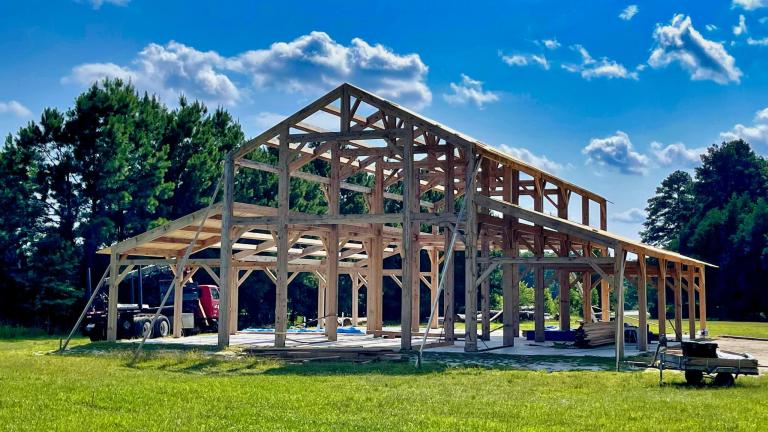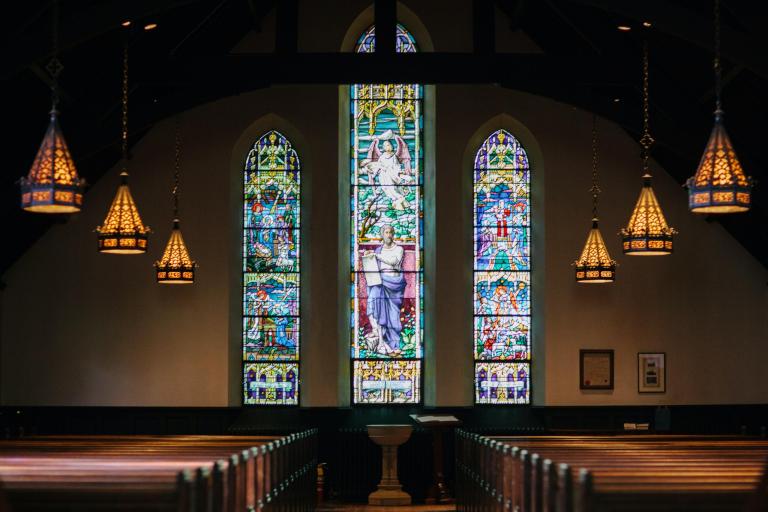When we talk about corrupt or broken “systems” in our world, we are often really talking about structures. A structure is how things are built. A system is just the process by which we reinforce the structure.
A structure is a powerful thing. When we build structures, we create obstacles that block or inhibit certain behaviors, perceptions, or attitudes. As we do so, we are also creating pathways for people to follow. This is the power of structures. It is like creating a maze. We build structures as a way to funnel people in the direction we want them to go.

There are all kinds of structures we build. Architects and engineers build physical ones. Bosses, managers, and politicians build cultural ones. The Church builds spiritual ones.
The Path of Least Resistance
Consider an office building, the physical structure. The engineers design a hallway that consists mostly of walls with a few doors. The walls are an obstacle that funnel us toward the doors. The plan is for the office workers to use the door to get into an office (which has its own obstacles and pathways for activity).

The doorway is what is commonly called the “path of least resistance”. Humans tend to seek and follow the path of least resistance. This is why you don’t bust down the wall to get into your office or climb up through the vents. It is more effort than is necessary. You follow the path outlined. That is the point and the power of structures.
Now, think about that same office in a metaphorical sense. A cultural structure. The “office” may represent the boss’ favor. The organization will, either by intention or habitual communication/reinforcement create a path of least resistance for “getting in” to the boss’ good graces. It is usually something like flattering him/her or making money for the company. There may be other ways to get in, but they are akin to smashing down walls or climbing through vents. It is a lot more work.
Every organization builds a structure. We create a path of least resistance for approval and promotion, for recognition. And the pathways we create tend to get followed. For a member of the organization, it is often a choice between either following the structure or leaving the organization.
What About Character?
Obviously, we are not all lemmings and we make our individual choices about attitude, perception, and behavior. What if our organization has an unhealthy structure? Isn’t a third choice, in addition to the two mentioned above, to fight the structure within our organization?
The answer is yes, but it is much harder than we might imagine.

In preparation for our work with Koinesúnē magazine, I have been reading a lot of books/articles about the state of the christian church in America. Whenever a pastor has a fall from grace, it seems as though the reaction is, “another bad apple was discovered. His poor character is exposed”.
Here is the problem with that. It is an oversimplification to blame these transgressions on a lack of character. Nobody has perfect character. We are all tempted, all capable of massive mistakes. The idea that transgressors are “bad apples” frees us from danger (after all, I am not a bad apple!) and causes a laziness that reinforces our imperfect structures.
Imagine that pastor enters the modern church world where the path of least resistance is to be charismatic and domineering, to tell people what they want to hear and strive to make yourself famous. That pastor can certainly decide not to play along. Which means every single day, he is going into church with a sledgehammer and hardhat, painstakingly smashing at walls. All the while, people around him are waltzing into the open doors the structure creates. Every day. Shards of rubble pricking his skin. Exhaustion. In the end, the path of least resistance can wear us down. Even those with the best of intentions and the strongest of character. In the church world, this often happens through self-deception, where the pastor tells himself he is fighting the structure even as he succumbs to it.
The point is that personal character is not enough. It is not enough because it is not perfect. The structures are tempting, the obstacles and resistance too difficult. In the end, if we will quit or give in. Thus is the power of structures.
Unless, of course, we can establish better structures. That is what the church needs. Better structures. Tear down and rebuild, if necessary. An individual fighting systems and structures will eventually get enveloped by those structures or opt out of the organization providing them.
Only by talking about structures, evaluating them, and remaking them as necessary can we systematically change the culture and course of an organization. We don’t need better people. We need better structures. A company of good apples still goes rotten in a maze of poor structure.
Structures are powerful. Just like the maze example, we start to forget that it does not have to be this way. Someone(s) built this on purpose. We play along and become a part of the maze. Always seeking the path of least resistance. It takes a lot of honest thought and intention to create new paths and erect new obstacles that will result in healthy people and organizations. It begins with recognizing the power of structure in our organizations and the paths they are creating. To recognize if we have succumbed to a structure not in alignment with our vision and values. And to have the courage and tenacity to not just stand up to unhealthy structures, but work to have them changed.












